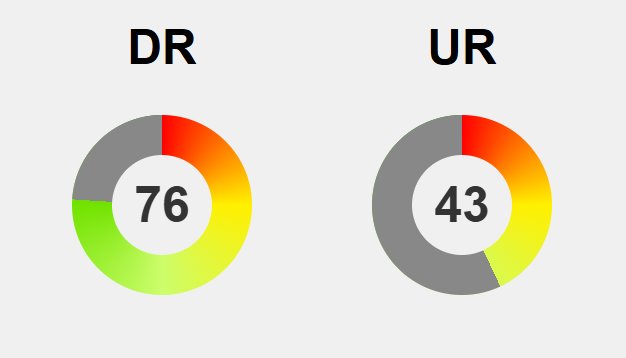Are your summer tires truly optimized for maximum lifespan and safety? While they’re designed to excel in warm, dry, and wet conditions, their longevity depends heavily on consistent care and smart driving habits. Regular inspections, proper tire pressure, and timely rotations are simple yet powerful tools to prevent uneven wear and costly repairs. But how often do you check your wheels, and are you aware of subtle signs of deterioration? Proper wheel alignment and careful storage during the off-season further preserve their performance. Moreover, cautious driving—avoiding potholes and aggressive maneuvers—can significantly extend tire life. Investing in durable, high-quality tires built for resilience might cost more upfront but offers long-term savings by resisting damage and lasting longer. Are you doing enough to protect your investment? This guide reveals proven strategies to keep your summer tires in top condition, ensuring safer drives and better savings throughout the season.

Mastering Summer Tire Care: Boost Safety and Save Money
Summer tires are a vital component of your vehicle’s setup, especially as temperatures rise and driving conditions become more demanding. Designed to perform optimally in warm, dry, or wet environments, they offer superior grip, handling, and safety compared to all-season or winter tires. But owning a good set of summer tires isn’t enough—you need to take proper care of them to ensure they deliver their best performance throughout the season. Well-maintained tires not only keep you safer on the road but also help you save money by extending their lifespan and reducing the need for early replacements.
The key to maximizing your summer tires’ longevity starts with regular inspections. A quick, visual check every month or before long trips can reveal issues like uneven tread wear, cuts, punctures, or debris lodged in the tread. Catching these problems early prevents small issues from escalating into costly repairs or safety hazards. Maintaining a habit of inspecting your tires ensures they stay in good shape, performing reliably when you need them most. It’s a simple step that can make a significant difference in how long your tires last and how well they handle.
Tire pressure plays a crucial role in your tires’ health and performance. Under-inflation causes uneven wear along the edges and increases the risk of overheating, which can lead to dangerous blowouts. Over-inflation, on the other hand, reduces the contact patch with the road, impairing grip and handling. Checking your tire pressure at least once a month—and before extended drives—helps you maintain the recommended levels. Properly inflated tires wear evenly, improve safety, and enhance fuel efficiency, all of which contribute to longer-lasting tires and better overall driving experiences.
Rotating your tires regularly is another straightforward yet effective way to promote even tread wear. Moving each tire to different positions on your vehicle prevents certain areas from thinning prematurely. Most manufacturers suggest rotating tires every 5,000 to 8,000 miles, but it’s worth consulting your vehicle’s manual for specific guidance. Consistent rotation not only prolongs your tires’ lifespan but also helps you spot uneven wear patterns early. These patterns can indicate alignment or suspension issues that, if addressed promptly, further extend the life of your tires and improve handling.
Proper wheel alignment complements your maintenance efforts by ensuring your tires make even contact with the road. Misaligned wheels cause uneven wear, often on one side or in patches, which can drastically shorten their useful life. Hitting potholes or curbs can knock your alignment out of sync, so scheduling regular checks is worthwhile. Correct alignment promotes uniform tread wear, better handling, and a safer, more comfortable ride. Investing in alignment now can save you money later by preventing uneven wear and maintaining your tires’ performance throughout the season.

Essential Strategies to Extend Your Summer Tires’ Lifespan
Maintaining your summer tires so they last longer isn’t complicated, but it does require consistent effort and attention to detail. Regular inspections are your first line of defense. A quick visual check every month or before long drives can reveal uneven tread wear, cuts, embedded debris, or punctures. Spotting these early helps prevent small issues from turning into costly repairs or safety risks. Making this a routine habit ensures your tires stay in good shape, perform reliably, and last through the season.
Tire pressure is a simple yet crucial factor. Under-inflated tires wear unevenly, especially along the edges, and are more prone to overheating, which increases the risk of blowouts. Over-inflated tires, conversely, reduce the contact patch with the road, impairing grip and handling. Checking your tire pressure at least once a month—and before any long trips—keeps your tires at the recommended levels. Proper inflation promotes even tread wear, enhances safety, and improves fuel efficiency, all of which help extend your tires’ lifespan.
Rotating your tires regularly is another straightforward step that pays off. Moving each tire to different positions on your vehicle prevents uneven wear patterns that can develop over time. Most manufacturers suggest rotating tires every 5,000 to 8,000 miles, but checking your vehicle’s manual will give you exact guidance. Consistent rotation not only prolongs tire life but also helps you catch early signs of uneven wear, which might indicate alignment or suspension issues that need attention.
Wheel alignment plays a key role in maximizing tire longevity. Misaligned wheels cause uneven contact with the road, leading to patchy or excessive wear on certain areas. Hitting potholes or curbs can knock your alignment out of sync, so regular checks are worthwhile. Proper alignment ensures your tires wear evenly, which extends their lifespan and maintains optimal handling. Investing in alignment now prevents premature tire replacement and keeps your vehicle running smoothly.
When the season changes or your tires are not in use, proper storage is essential. Store tires in a cool, dry place away from direct sunlight, ozone sources, and extreme temperatures. Keep them upright if possible, or flat if space constraints require stacking, but avoid stacking too many to prevent deformation. Before storing, wash off dirt, oils, and chemicals that can degrade rubber over time. Good storage habits preserve the rubber’s flexibility and grip, so your tires remain in good condition and ready to perform when needed.
Driving style significantly influences tire wear. Gentle acceleration, smooth braking, and cautious steering reduce heat buildup and tread stress. Avoid aggressive maneuvers like sharp turns, rapid acceleration, or sudden stops whenever possible. Staying within speed limits and being attentive to road conditions—like loose gravel or debris—minimizes damage risk. These small adjustments in driving behavior can make a big difference, helping your tires wear evenly and last longer.
Road hazards like potholes, rough surfaces, and debris are unavoidable at times but can cause significant damage. Slowing down when approaching rough patches or visible obstacles reduces impact stress on your tires. When avoidance isn’t possible, driving more cautiously can prevent cuts, punctures, or uneven wear. Being alert and cautious on the road helps protect your investment and keeps your tires in better shape for the long haul, especially during busy summer travel.
Finally, choosing high-quality tires built for durability can make a noticeable difference. Look for options with reinforced sidewalls and tough rubber compounds designed to resist cuts and punctures. Although they may cost more upfront, durable tires often come with warranties that reflect their longevity. Investing in reliable, well-made tires tailored to your driving conditions and habits can save you money over time by reducing replacements and ensuring consistent performance throughout the summer months.

Advanced Tips for Maximizing Your Summer Tire Durability
Extending the life of your summer tires often depends on smarter driving habits that reduce unnecessary stress on the rubber. Gentle acceleration and smooth braking are simple yet effective ways to minimize heat buildup and uneven tread wear. By avoiding aggressive maneuvers, you help maintain even tread patterns and prevent premature deterioration, which can save you money and enhance safety over time. These habits don’t require special skills—just a conscious effort to drive more predictably and calmly, especially during busy or challenging road conditions.
Road conditions also play a crucial role in tire longevity. Potholes, rough surfaces, and debris can cause cuts, punctures, or uneven wear that shortens your tires’ lifespan. When possible, slow down in areas where hazards are visible or unavoidable. If you encounter a pothole or debris that cannot be avoided, reducing your speed minimizes impact damage. Staying vigilant and cautious not only protects your tires but also promotes safer driving overall, helping you get the most out of each season’s set of summer tires.
Choosing high-quality tires designed for durability makes a visible difference. Look for models with reinforced sidewalls and tough rubber compounds built to resist cuts and punctures. Although premium tires may start at a higher price, their increased resistance to damage and longer tread life often translate into savings over time. When you invest in reliable tires suited for your driving style and climate, you’re making a strategic choice to extend their durability, reduce replacements, and maintain consistent performance throughout the season.
Proper wheel alignment and suspension health are essential for maximizing tire lifespan. Misaligned wheels cause uneven contact with the road, leading to patchy or excessive wear that can render tires useless prematurely. Regular checks—especially after hitting potholes or rough patches—ensure your wheels stay in proper alignment. Correct alignment promotes even tread wear and better handling, which translates into longer-lasting tires and a safer, more comfortable ride. Making this a routine part of vehicle maintenance can save money and prevent the frustration of early tire replacements.
Finally, how you store your tires during the off-season impacts their durability. Keep them in a cool, dry place away from direct sunlight, ozone sources, and extreme temperatures. Store tires upright when possible, or flat if stacking is necessary, but avoid stacking too many to prevent deformation. Before storing, clean off dirt, oils, and chemicals that can accelerate rubber degradation. Proper storage preserves the flexibility and grip of your tires, ensuring they’re ready for the next season. Small steps like these safeguard your investment and make sure your summer tires remain in top shape, ready to deliver safe, reliable performance whenever you hit the road.
For additional insights on maintaining your tires and ensuring optimal performance, consider exploring expert advice on tire care. Staying informed about proper tire maintenance techniques can further extend their lifespan and enhance safety during your drives.






